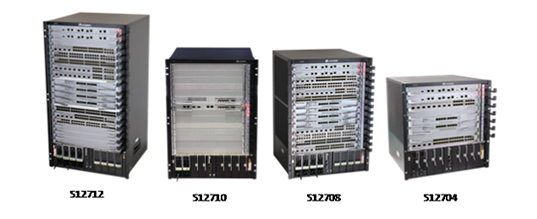
Huawei S12700 Series Agile Campus Switch
-
Min Order
1
-
Product Unit
Pieces
-
Origin
China Mainland
-
Payment


- Contact Now Start Order
- Favorites Share
- Description
Product Detail
S12700 Series Agile Switches
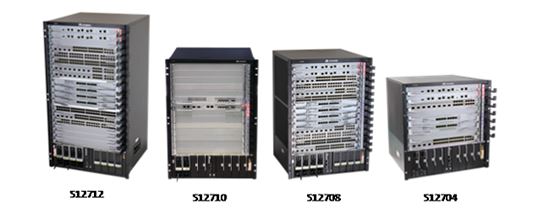
Huawei S12700 series agile switches are designed for next-generation campus networks. Using a fully programmable switching architecture, the S12700 series allows fast, flexible function customization and supports a smooth evolution to Software-Defined Networking (SDN). The S12700 series uses a Huawei Ethernet Network Processor (ENP) and provides a native Wireless Access Controller (AC) to help build a wired and wireless converged network. Its Unified User Management capabilities deliver unified user and service management, and Huawei's Packet Conservation Algorithm for Internet (iPCA) supports hop-by-hop monitoring of any service flows, helping manage services in a more refined way. The S12700 series runs the Huawei Versatile Routing Platform (VRP), which provides high-performance L2/L3 switching services and rich network services, such as Multiprotocol Label Switching (MPLS) VPN, hardware IPv6, desktop cloud, and video conferencing. In addition, the S12700 series offers a variety of reliability technologies, including in-service software upgrade, non-stop forwarding, Cluster Switch System Generation2 (CSS2), a switch fabric hardware clustering system that allows 1+N backup of Main Processing Units (MPUs), hardware Eth-OAM/BFD, and ring network protection. These technologies help improve productivity and maximize network operation time, reducing Total Cost of Ownership (TCO).
The S12700 series is available in four models: S12704, S12708, S12710 and S12712.
Product characteristics
Make your network agile and service-oriented
The high-speed ENP chip used in the S12700 series is tailored for Ethernet. The chip's flexible packet processing and traffic control capabilities can meet current and future service requirements, helping build a highly scalable network.
In addition to providing all the capabilities of common switches, the S12700 series provides fully programmable open interfaces and supports programmable forwarding behaviors. Enterprises can use the open interfaces to develop new protocols and functions independently, or jointly with other vendors, to build campus networks that meet their needs.
The ENP chip uses a fully programmable architecture, on which enterprises can define their own forwarding models, forwarding behaviors, and lookup algorithms. This architecture speeds service innovation and enables the provisioning of a customized service within six months, without replacing hardware. In contrast, traditional Application Specific Integrated Circuit (ASIC) chips use a fixed forwarding architecture and follow a fixed forwarding process. For this reason, new services cannot be provisioned until new hardware is developed to support the services, which can take one to three years.
Deliver abundant services agilely
The S12700 series' native AC capabilities allow enterprises to build a wireless network without additional AC hardware. Each S12700 switch can manage up to 6,144 APs and 65,536 users. It is the first core switch that provides T-bit AC capabilities, avoiding the performance bottleneck on independent AC devices. The native T-bit AC capabilities help organizations better cope with challenges in the high-speed wireless era.
The S12700 series' unified user management function authenticates both wired and wireless users, ensuring a consistent user experience no matter whether they are connected to the network through wired or wireless access devices. The unified user management function supports various authentication methods, including 802.1x, MAC address, and Portal authentication, and is capable of managing users based on user groups, domains, and time ranges. These functions control user and service management and enable the transformation from device-centered management to user-centered management.
The S12700 series' Service Chain function can virtualize value-added service capabilities, such as next-generation firewall. Then these capabilities can be used by campus network entities (such as switches, routers, AC, AP, and terminals), regardless of their physical locations. Service Chain provides a more flexible value-added service deployment solution, which reduces equipment investment and maintenance costs.
Provide agile finely granular management
Packet Conservation Algorithm for Internet (iPCA) changes the traditional method that uses simulated traffic for fault location. iPCA technology monitors network quality for any service flow at any network node, at any time, and without extra costs. It can detect temporary service interruptions within one second and can identify faulty ports accurately. This cutting-edge fault detection technology turns "extensive management" into "finely granular management."
Super Virtual Fabric 2.0 (SVF 2.0) technology can not only virtualize fixed-configuration switches into S12700 switch line cards but also virtualize APs as switch ports. With this virtualization technology, a physical network with core/aggregation switches, access switches, and APs can be virtualized into a "super switch", offering the simplest network management solution.
Industry-leading line cards
Using Huawei's advanced ENP chips, the S12700 series supports several million hardware entries, leaving traditional switches far behind. The S12700 series provides 1M MAC address entries and 3M Forwarding Information Base (FIB) entries, meeting requirements of route-intensive scenarios, such as the Metropolitan Area Network (MAN) for a television broadcasting or education network. Providing 1M NetStream entries enables fine granular traffic statistics for college campus networks and large-scale enterprise campus networks.
The S12700 series provides large buffer on line card to prevent packet loss upon traffic bursts, delivering high-quality video services.
The S12700 series supports high-density line-speed cards, such as 48 x 10 GE, 8 x 40 GE, and 4 x 100 GE cards. Each S12700 chassis can provide a maximum of 576 x 10 GE ports, 96 x 40 GE ports, and 48 x 100 GE ports. This large port capacity fully meets the requirements of bandwidth-consuming applications, such as multimedia video conferencing, protecting customer investments.
End-to-end reliability
Device-Level Reliability: CSS2 Switch Fabric Hardware Clustering Technology
> Based on back-to-back clustering technology, widely used on high-end core routers, the S12700 series employs second-generation switching fabric hardware clustering technology, CSS2, an enhancement to CSS switching fabric clustering technology.
> CSS2 technology connects cluster member switches through switch fabric unit hardware channels; therefore, cluster control and data packets need only be forwarded once by the switch fabric units and do not go through service cards. Compared with traditional service port clustering technologies, CSS2 minimizes the impact of software failures, reduces service interruption risks caused by service cards, and also significantly shortens transmission latency.
> CSS2 supports 1+N backup of MPUs. This means a cluster can run stably as long as one MPU of any chassis in the cluster is working normally. In a cluster connected by service ports, each chassis must have at least one MPU working normally; therefore, CSS2 is more reliable than traditional service port clustering technologies.
Network-Level Reliability: End-to-End Hardware Protection Switching
> The S12700 uses a series of link detection and protection switching technologies, such as hardware Eth-OAM, BFD, G.8032, and Smart Ethernet Protection (SEP), to realize end-to-end protection switching. These technologies help build a campus network that responds quickly to topology changes and provides the most reliable services.
> The S12700 supports High-speed Self Recovery (HSR) technology. Using Huawei's ENP cards, the S12700 implements end-to-end IP MPLS transmission network protection switchover within 50 ms, improving network reliability.
Comprehensive security measures
The S12700 supports MAC security (MACSec) that enables hop-by-hop secure data transmission. Therefore, the S12700 can be applied to scenarios that pose high requirements on data confidentiality, such as government and finance sectors.
NGFW is a next-generation firewall card that can be installed on an S12700. In addition to the traditional defense functions such as firewall, identity authentication, and Anti-DDoS, the NGFW supports IPS, anti-spam, web security, and application control functions.
The S12700 provides innovative next-generation environment awareness and access control. It identifies the application-layer attacks and protects network-layer applications based on application type, content, time, user, threaten, and location.
The dedicated software and hardware platforms provide an Intelligent Aware Engine (IAE) to perceive application information when all security functions are enabled. The built-in hardware accelerator for content detection improves application-layer protection efficiency and ensures the 10G+ performance when all security functions are enabled.
Product specifications
| Item | S12704 | S12708 | S12710 | S12712 |
|---|---|---|---|---|
| Switching Capacity | 4.88 Tbit/s/16.08 Tbit/s | 12.32 Tbit/s/32.16 Tbit/s | 13.12 Tbit/s/38.56 Tbit/s | 17.44 Tbit/s/44.96 Tbit/s |
| Packet Forwarding Rates | 3,120 Mpps/4,560 Mpps | 6,240 Mpps/9,120 Mpps | 7,440 Mpps/11,040 Mpps | 9,120 Mpps/12,960 Mpps |
| MPU Slots | 2 | 2 | 2 | 2 |
| SFU Slots | 2 | 4 | 4 | 4 |
| Service Card Slots | 4 | 8 | 10 | 12 |
| Redundancy Design | MPUs, SFUs, power supplies, and fan modules | |||
| CSS2 | 1+N backup of MPUs in a cluster | |||
| Up to 1.92 Tbit/s cluster bandwidth, 4 µs inter-chassis transmission latency | ||||
| Wireless Network Management | Native AC | |||
| AP access control, AP region management, and AP profile management | ||||
| Radio profile management, uniform static configuration, and centralized dynamic management | ||||
| Basic WLAN services, QoS, security, and user management | ||||
| User Management | Unified user management | |||
| 802.1x, MAC, and Portal authentication | ||||
| Traffic- and time-based accounting | ||||
| User authorization based on user groups, domains, and time ranges | ||||
| iPCA Quality Awareness | Marking real service packets to obtain real-time count of dropped packets and packet loss ratio | |||
| Counting number of dropped packets and packet loss ratio on devices and L2/L3 networks | ||||
| SVF2.0 Virtualization | Up to 4K clients (access switches and APs) virtualized into a single device | |||
| Two layers of ASs allowed in an SVF system | ||||
| Third-party devices allowed between SVF parent and clients | ||||
| VLAN | Access, trunk, and hybrid interface types, auto-negotiation of LNP links | |||
| Default VLAN | ||||
| VLAN switching | ||||
| QinQ and selective QinQ | ||||
| MAC address-based VLAN assignment | ||||
| ARP | 256K ARP entries | |||
| MAC Address | 1M MAC address entries | |||
| Dynamic MAC address learning and aging | ||||
| Static, dynamic, and blackhole MAC address entries | ||||
| Source MAC address filtering | ||||
| MAC address limiting based on ports and VLANs | ||||
| Ring Network Protection | Spanning Tree Protocol(STP)(IEEE 802.1d), RSTP(IEEE 802.1w), and MSTP (IEEE 802.1s) | |||
| SEP | ||||
| Bridge Protocol Data Unit (BPDU), root protection, and loop protection | ||||
| BPDU tunnel | ||||
| G.8032 Ethernet Ring Protection Switching (ERPS) | ||||
| IP Routing | 3M IPv4 routing entries | |||
| 512K IPv6 routing entries | ||||
| IPv4 dynamic routing protocols, such as RIP, OSPF, IS-IS, and BGP | ||||
| IPv6 routing protocols, such as RIPng, OSPFv3, IS-ISv6, and BGP4+ | ||||
| Multicast | 128,000 multicast routing entries | |||
| IGMP v1/v2/v3 and IGMP v1/v2/v3 snooping | ||||
| PIM-DM, PIM-SM, and PIM-SSM | ||||
| Multicast Source Discovery Protocol (MSDP) and Multiprotocol Extensions for BGP (MBGP) | ||||
| Fast leave | ||||
| Multicast traffic control | ||||
| Multicast querier | ||||
| Multicast protocol packet suppression | ||||
| Multicast Call Admission Control (CAC) | ||||
| Multicast ACL | ||||
| MPLS | Basic MPLS functions | |||
| MPLS Operations, Administration, and Maintenance (OAM) | ||||
| MPLS Traffic Engineering (TE) | ||||
| MPLS VPN/VLL/VPLS | ||||
| Reliability | Link Aggregation Control Protocol (LACP) and E-Trunk | |||
| Virtual Router Redundancy Protocol (VRRP) and Bi-directional Forwarding Detection (BFD) for VRRP | ||||
| BFD for BGP/IS-IS/OSPF/static route | ||||
| Non-Stop Forwarding (NSF) and Graceful Restart (GR) for BGP/IS-IS/OSPF/LDP | ||||
| TE Fast ReRoute (FRR) and IP FRR | ||||
| Eth-OAM 802.3ah and 802.1ag (hardware-based) | ||||
| HSR | ||||
| ITU-Y.1731 | ||||
| Device Link Detection Protocol (DLDP) | ||||
| QoS | 256K ACLs | |||
| Traffic classification based on Layer 2 headers, Layer 3 protocols, Layer 4 protocols, and 802.1p priority | ||||
| ACLs and actions such as Committed Access Rate (CAR), re-marking, and scheduling | ||||
| Queuing algorithms, such as SP, WRR, DRR, SP + WRR, and SP + DRR | ||||
| Congestion avoidance mechanisms, including (WRED) and tail drop | ||||
| H-QoS | ||||
| Traffic shaping | ||||
| Configuration and Maintenance | Terminal access services such as console port login, Telnet, and SSH | |||
| Network management protocols, such as SNMP v1/v2/v3 | ||||
| File uploading and downloading through FTP and TFTP | ||||
| BootROM upgrade and remote in-service upgrade | ||||
| Hot patches | ||||
| User operation logs | ||||
| Security and Management | MAC address, Portal, 802.1x, and Dynamic Host Configuration Protocol (DHCP) snooping triggered authentication | |||
| MACsec | ||||
| RADIUS and HWTACACS authentication for login users | ||||
| Command line authority control based on user levels, preventing unauthorized users from using command configurations | ||||
| Defense against DoS attacks, Transmission Control Protocol (TCP) SYN Flood attacks, User Datagram Protocol (UDP) Flood attacks, broadcast storms, and heavy traffic attacks | ||||
| Remote Network Monitoring (RMON) | ||||
| Security Protection* | Firewall | |||
| Network Address Translation (NAT) | ||||
| IPSec, SSL VPN | ||||
| Intrusion Protection System (IPS) | ||||
| Load balancing Analog Digital Conversion (ADC) | ||||
| Energy Saving | Energy Efficient Ethernet (802.3az) | |||
Dimensions (H x W x D) | 441.7 mm x 442 mm x 489 mm,10U | 663.95 mm x 442 mm x 489 mm,15U | 663.95 mm x 442 mm x 489 mm,15U | 841.75 mm x 442 mm x 489 mm,19U |
Weight (empty chassis) | 29 kg | 42 kg | 37 kg | 63 kg |
| Operating Voltage | DC: –40V to –72V | |||
| Maximum power consumption of the entire equipment | = 2,200W | = 4,400W | = 4,400W | = 6,600W |
*: The S12700 supports the NGFW, which is the next-generation firewall card, and the IPS card. For more specification information, see the brochures of the cards.
Ordering information
| S12700 basic configuration | |
|---|---|
| LE2BN66ED000 | N66E DC assembly rack (eight 60A outputs, maximum 2,200W per output, 600 mm x 600 mm x 2,200 mm) |
| LE2BN66EA000 | N66E AC assembly rack (four 16A outputs, maximum 2,500W per output, 600 mm x 600 mm x 2,200 mm) |
| ET1BS12704S0 | S12704 assembly chassis |
| ET1BS12708S0 | S12708 assembly chassis |
| ET1BS12710S0 | S12710 assembly chassis |
| ET1BS12712S0 | S12712 assembly chassis |
| ET1MFBX00000 | Wide Voltage 129 Fan Box |
| EH1M00FBX000 | Wide Voltage 74 Fan Box |
| Monitoring unit | |
| EH1D200CMU00 | Centralized monitoring unit |
| Main processing unit | |
| ET1D2MPUA000 | S12700 main control unit A, optional clock |
| ET1D2MPUBC00 | S12710 main control unit B, optional clock |
| Switch fabric unit | |
| ET1D2SFUA000 | S12700 switch fabric unit A |
| ET1D2SFUB000 | S12700 switch fabric unit B |
| ET1D2SFUC000 | S12700 switch fabric unit C |
| ET1D2SFUD000 | S12700 switch fabric unit D |
| 100M/1,000M Ethernet electrical interface cards | |
| ET1D2G48TEA0 | 48-port 10/100/1,000 BASE-T interface card (EA, RJ45) |
| ET1D2G48TEC0 | 48-port 10/100/1,000 BASE-T interface card (EC, RJ45) |
| ET1D2G48TX1E | 48-port 10/100/1,000 BASE-T interface card (X1E, RJ45) |
| 100M/1,000M Ethernet optical interface cards | |
| ET1D2G24SEC0 | 24-port 100/1,000 BASE-X interface card (EC, SFP) |
| ET1D2G48SEA0 | 48-port 100/1,000 BASE-X interface card (EA, SFP) |
| ET1D2G48SEC0 | 48-port 100/1,000 BASE-X interface card (EC, SFP) |
| ET1D2G48SX1E | 48-port 100/1,000 BASE-X interface card (X1E, SFP) |
| 100M/1,000M Ethernet electrical and optical interface cards | |
| ET1D2T36SEA0 | 36-port 10/100/1,000 BASE-T and 12-port 100/1,000 BASE-X interface card (EA,RJ45/SFP) |
| 10 GE optical interface cards | |
| ET1D2X04XEA0 | 4-port 10G BASE-X interface card (EA, XFP) |
| ET1D2X04XEC1 | 4-port 10G BASE-X interface card (EC, XFP) |
| ET1D2S04SX1E | 4-port 10G BASE-X and 24-port 100/1,000 BASE-X and 8-port 10/100/1,000 BASE-T combo interface card (X1E, RJ45/SFP/SFP+) |
| ET1D2S08SX1E | 8-port 10G BASE-X and 8-port 100/1,000 BASE-X and 8-port 10/100/1,000 BASE-T combo interface card (X1E, RJ45/SFP/SFP+) |
| ET1D2X12SSA0 | 12-port 10G BASE-X interface card (SA, SFP+) |
| ET1D2X16SSC0 | 16-Port 10G BASE-X interface card (SC, SFP+) |
| ET1D2X16SSC2 | 16-port 10G BASE-X interface card (SC, SFP+) |
| ET1D2X32SSC0 | 32-Port 10G BASE-X interface card (SC, SFP+) |
| ET1D2X48SEC0 | 48-port 10G BASE-X interface card (EC, SFP+) |
| 40 GE optical interface cards | |
| ET1D2L02QSC0 | 2-port 40G BASE-X interface card (SC, QSFP+) |
| ET1D2L08QSC0 | 8-port 40G BASE-X interface card (SC, QSFP+) |
| 100 GE optical interface cards | |
| ET1D2C02FEE0 | 2-Port 100G BASE-X interface card (EE, CFP) |
| Cluster service subcard | |
| EH1D2VS08000 | 8-port 10G cluster switching system service unit (SFP+) |
| Service processing cards | |
| ET1D2FW00S00 | NGFW Module A, with HW General Security Platform Software |
| ET1D2FW00S01 | NGFW Module B, with HW General Security Platform Software |
| ET1D2FW00S02 | NGFW Module C, with HW General Security Platform Software |
| ET1D2IPS0S00 | IPS Module A, with HW General Security Platform Software |
| ACU2 | WLAN ACU2 Access Controller Unit (128 AP Control Resource Included) |
| Optical transceivers | |
| FE-SFP optical transceiver | |
| SFP-FE-SX-MM1310 | Optical transceiver, SFP, 100M/155M, Multi-mode Module (1,310 nm, 2 km, LC) |
| eSFP-FE-LX-SM1310 | Optical transceiver, eSFP, 100M/155M, Single-mode Module (1,310 nm, 15 km, LC) |
| S-SFP-FE-LH40-SM1310 | Optical transceiver, eSFP, FE, single-mode module (1,310 nm, 40 km, LC) |
| S-SFP-FE-LH80-SM1550 | Optical transceiver, eSFP, FE, single-mode module (1,550 nm, 80 km, LC) |
| GE-SFP optical transceivers | |
| SFP-1,000 BaseT | Copper transceiver, SFP, GE, electrical interface module (100m, RJ45) |
| eSFP-GE-SX-MM850 | Optical transceiver, eSFP, GE, multimode module (850 nm, 0.5 km, LC) |
| SFP-GE-LX-SM1310 | Optical transceiver, SFP, GE, single-mode module (1,310 nm, 10 km, LC) |
| S-SFP-GE-LH40-SM1310 | Optical transceiver, eSFP, GE, single-mode module (1,310 nm, 40 km, LC) |
| S-SFP-GE-LH40-SM1550 | Optical transceiver, eSFP, GE, single-mode module (1,550 nm, 40 km, LC) |
| S-SFP-GE-LH80-SM1550 | Optical transceiver, eSFP, GE, single-mode module (1,550 nm, 80 km, LC) |
| eSFP-GE-ZX100-SM1550 | Optical transceiver, eSFP, GE, single-mode module (1,550 nm, 100 km, LC) |
| 10 GE-XFP Optical transceivers | |
| XFP-SX-MM850 | Optical transceiver, XFP, 10G, multimode module (850 nm, 0.3 km, LC) |
| XFP-STM64-LX-SM1310 | Optical transceiver, XFP, 10G, single-mode module (1,310 nm, 10 km, LC) |
| XFP-STM64-LH40-SM1550 | Optical transceiver, XFP, 10G, single-mode module (1,550 nm, 40 km, LC) |
| XFP-STM64-SM1550-80 km | Optical transceiver, XFP, 10G, single-mode module (1,550 nm, 80 km, LC) |
| 10 GE-SFP+ Optical transceivers | |
| OMXD30000 | Optical transceiver, SFP+, 10G, multimode module (850 nm, 0.3 km, LC) |
| OSX010000 | Optical transceiver, SFP+, 10G, single-mode module (1,310 nm, 10 km, LC) |
| OSX040N01 | Optical transceiver, SFP+, 10G, single-mode module (1,550 nm, 40 km, LC) |
| OSXD22N00 | Optical transceiver, SFP+, 10G, single-mode module (1,310 nm, 0.22 km, LC, LRM) |
| LE2MXSC80FF0 | Optical transceiver, SFP+, 10G, single-mode module (1,550 nm, 80 km, LC) (only for 8-port 10G BASE interface cards) |
| SFP-10G-USR | Optical transceiver, SFP+, 10G, multimode module (850 nm, 0.1 km, LC) |
| SFP-10G-ZR | Optical transceiver, SFP+, 10G, single-mode module (1,550 nm, 80 km, LC) |
| SFP-10G-AOC3M | AOC optical transceiver, SFP+, 850 nm, 1G to 10G, 0.003 km |
| SFP-10G-AOC10M | AOC optical transceiver, SFP+, 850 nm, 1G to 10G, 0.01 km |
| QSFP-H40G-AOC10M | Optical transceiver, QSFP+, 40G, (850 nm, 10m, AOC) |
| QSFP-4SFP10-AOC10M | Optical transceiver, QSFP+, 40G, (850 nm, 10m, AOC) (Connect to four SFP+ Optical Transceiver) |
| SFP-10G-BXU1 | 10G Base, Bi-Directional (BIDI) optical transceiver, SFP, 10G, single-mode module (Tx1270/Rx1330, 10 km, LC) |
| SFP-10G-BXD1 | 10G Base, BIDI optical transceiver, SFP, 10G, single-mode module (Tx1330/Rx1270, 10 km, LC) |
| SFP-10G-ZCW1571 | Optical transceiver, SFP+, 10G, single-mode module (CWDM, 1,571 nm, 70 km, LC) |
| SFP-10G-ZCW1591 | Optical transceiver, SFP+, 10G, single-mode module (CWDM, 1,591 nm, 70 km, LC) |
| SFP-10G-ZCW1611 | Optical transceiver, SFP+, 10G, single-mode module (CWDM, 1,611 nm, 70 km, LC) |
| SFP-10G-iLR | Optical Transceiver, SFP+, 9.8G, Single-mode Module (1,310 nm, 1.4 km, LC) |
| 40 GE optical transceivers | |
| QSFP-40G-SR4 | Optical transceiver, Quad Small Form-Factor Pluggable (QSFP), 40G, multimode module (850 nm, 0.15 km, MPO) (connecting to one QSFP+ optical transceiver) |
| QSFP-40G-iSR4 | Optical transceiver, QSFP, 40G, multimode module (850 nm, 0.15 km, MPO) (connecting to four SFP+ optical transceivers) |
| QSFP-40G-LX4 | 40G Base-LX4 Optical Transceiver, QSFP+, 40 GE, Single-mode (1,310 nm, 2 km, LC), Multi-mode (1,310 nm, 0.15 km, LC) |
| QSFP-40G-iSM4 | 40G Base-iSM4 Optical Transceiver, QSFP+, 40G, Single-mode Module (1,310 nm, 1.4 km, MPO)(Connect to four SFP+ Optical Transceiver) |
| QSFP-40G-eSM4 | 40G Base-eSM4 Optical Transceiver, QSFP+, 40G, Single-mode Module (1,310 nm, 10 km, MPO)(Connect to four SFP+ Optical Transceiver) |
| QSFP-40G-LR4 | 40G Base-LR4 optical transceiver, QSFP+, 40G, single-mode module (1,310 nm, 10 km, LC) |
| QSFP-40G-eiSR4 | 40G Base-SR4 Optical transceiver, QSFP+, 40G, multimode module (850 nm, 0.3 km, MPO) (connecting to four SFP+ optical transceivers) |
| CFP-40G-SR4 | High Speed Transceiver, CFP, 40G, Multimode Module (850 nm, 4 x 10G, 0.1 km, MPO) |
| CFP-40G-LR4 | High Speed Transceiver, CFP, 40G, Single-mode Module (1,310 nm band, 41.25G, 10 km, straight LC) |
| CFP-40G-ER4 | High Speed Transceiver, CFP, 40G, Single-mode Module (1,310 nm band, 41.25G, 40 km, straight LC) |
| CFP-40G-ZR4 | High Speed Transceiver, CFP, 40G, Single-mode Module (1,550 nm band, 41.25G, 80 km, straight LC) |
| QSFP-40G-ER4 | 40G Base-ER4 Optical Transceiver, QSFP+, 40G, Single-mode Module (1,310 nm, 40 km, LC) |
| 100 GE optical transceivers | |
| CFP-100G-SR10 | High Speed Transceiver, CFP, 100G, Multimode Module (850 nm, 10 x 10G, 0.1 km, MPO)(Can connect to 10 SFP+ ports or 2 QSFP+ ports) |
| CFP-100G-LR4 | High Speed Transceiver, CFP, 100G, Single-mode Module (1,310 nm band, 4 x 25G, 10 km, straight LC) |
| CFP-100G-ER4 | High Speed Transceiver, CFP, 100G, Single-mode Module (1,310 nm band, 4 x 25G, 40 km, straight LC) |
| CFP-100GE-ZR4 | 100G Base, CFP Module, 100G, Single-mode Module (1,310 nm band, 4 x 25G, 80 km, straight LC) |
| BIDI-SFP optical transceivers | |
| SFP-FE-LX-SM1310-BIDI | Optical transceiver, eSFP, FE, BIDI single-mode module (Tx1310/Rx1550, 15 km, LC) |
| SFP-FE-LX-SM1550-BIDI | Optical transceiver, eSFP, FE, BIDI single-mode module (Tx1550/Rx1310, 15 km, LC) |
| SFP-GE-LX-SM1310-BIDI | Optical transceiver, eSFP, GE, BIDI single-mode module (Tx1310/Rx1490, 10 km, LC) |
| SFP-GE-LX-SM1490-BIDI | Optical transceiver, eSFP, GE, BIDI single-mode module (Tx1490/Rx1310, 10 km, LC) |
| SFP-10G-ER-SM1330-BIDI | Optical Transceiver, SFP+, 10G, BIDI Single-mode Module (Tx1330/Rx1270, 40 km, LC) |
| SFP-10G-ER-SM1270-BIDI | Optical Transceiver, SFP+, 10G, BIDI Single-mode Module (Tx1270/Rx1330, 40 km, LC) |
| LE2MGSC40ED0 | Optical transceiver, SFP, GE, BIDI single-mode module (Tx1490/Rx1310, 40 km, LC) |
| LE2MGSC40DE0 | Optical transceiver, SFP, GE, BIDI single-mode module (Tx1310/Rx1490, 40 km, LC) |
| SFP-GE-BXU1-SC | 1,000 Base, BIDI optical transceiver, SFP, GE, single-mode module (Tx1490/Rx1310, 10 km, SC) |
| SFP-GE-ZBXD1 | Optical Transceiver, eSFP, GE, BIDI Single-mode Module (Tx1570/Rx1490, 80 km, LC) |
| SFP-GE-ZBXU1 | Optical Transceiver, eSFP, GE, BIDI Single-mode Module (Tx1490/Rx1570, 80 km, LC) |
| Power modules | |
| PAC-2200WF | 2,200W AC power module |
| PDC-2200WF | 2,200W DC power module |
| W2PSA0800 | 800W AC Power Module (black) |
| Software | |
| ET1SBSM27000 | S12700 V200R007C00 software |
| ET1SBSM28000 | S12700 V200R008C00 software |
| ET1SBSM29000 | S12700 V200R009C00 software |
| ET1SBSM2A000 | S12700 V200R010C00 software |
| License | |
| ET1SMPLS0000 | MPLS Function License |
| ET1SNQA00000 | NQA Function License |
| ET1SIPV60000 | IPv6 Function License |
| ET1SSVFF0000 | SVF Function License (applicable only to the S12700 series) |
| ET1SFIB128K0 | X-series LPU FIB Resource License-128K |
| ET1SFIB512K0 | X-series LPU FIB Resource License-512K |
| ET1SWL512AP0 | WLAN Access Controller AP Resource License-512AP (with the X-series LPU used) |
| ET1SWL128AP0 | WLAN Access Controller AP Resource License-128AP (with the X-series LPU used) |
| ET1SWL64AP00 | WLAN Access Controller AP Resource License-64AP (with the X-series LPU used) |
| ET1SWL16AP00 | WLAN Access Controller AP Resource License-16AP (with the X-series LPU used) |
| L-ACU2-128AP | ACU2 Wireless Access Controller AP Resource License (128 AP) |
| L-ACU2-256AP | ACU2 Wireless Access Controller AP Resource License (256 AP) |
| L-ACU2-384AP | ACU2 Wireless Access Controller AP Resource License (384 AP) |
| L-ACU2-512AP | ACU2 Wireless Access Controller AP Resource License (512 AP) |
| Documentation | |
| ET1IV2R5C0C0 | S12700 Series Agile Switches Product Documentation (Chinese) |
| ET1IV2R5C0E0 | S12700 Series Agile Switches Product Documentation (English) |
Networking and applications
In an enterprise campus network
S12700 series switches are deployed on the core layer of an enterprise campus network. Native ACs provided by the S12700 enable customers to build wireless networks without additional AC hardware, reducing network construction costs. The S12700 is the first core switch that provides T-bit AC capabilities, avoiding the performance bottleneck on independent ACs. The native T-bit AC capabilities help customers migrate their wireless networks to 802.11ac. The S12700 series realizes wired and wireless convergence and delivers consistent experience to wired and wireless users through uniform device, user, and service management.
In a college campus network
S12700 series switches are deployed on the core layer of a college campus network. The unified user management function on the S12700 reduces network construction costs by removing the need to purchase new BRAS hardware. Each S12700 switch supports 65,536 users, allowing a large number of concurrent access users. Its H-QoS feature implements fine granular user and service management. The S12700 series realizes wired and wireless convergence and delivers consistent experience to wired and wireless users through uniform device, user, and service management.
In a transmission network for video conferencing, desktop cloud, and video surveillance applications
The Large buffer prevents packet loss upon traffic bursts, delivering high-quality video streams. The S12700 series supports up to 1M MAC address entries and 3M FIB entries, which allow access from a large number of terminals and help evolution to IPv6 and the Internet of Things (IoT). Employing end-to-end hardware reliability technologies and iPCA technology, the S12700 series offers a highly reliable, high-quality, scalable video conferencing and surveillance solution.
On the core/aggregation layer of a MAN
S12700 series switches are used as core or aggregation switches on the Metropolitan Area Network (MAN) of a television broadcasting or education network. The 3M FIB entries provided are sufficient for large-scale routing on the MAN. CSS2 switch fabric hardware clustering technology, originating from clustering technology for high-end core routers, delivers carrier-class reliability on the MAN. Additionally, the S12700 series supports comprehensive L2/L3 MPLS VPN features, providing a highly reliable, secure, and scalable metropolitan bearer network solution.
In an enterprise data center
S12700 series switches are deployed on the core or aggregation layer of an enterprise data center network. The S12700 series has high-density line cards, such as 48 x 10 GE cards, meeting the requirements for large data throughput on data center core/aggregation nodes. Using CSS2 switch fabric hardware clustering technology, the S12700 series provides up to 1.92 Tbit/s cluster bandwidth and shortens the inter-chassis forwarding latency to 4 µs. This technology helps customers build a high performance, high reliability, and low latency data center network.
Chucheng Information is one of the leading China huawei s12700 series agile campus switch manufacturers, which is also one of the famous brands. We employed well-educated and experienced workers and introduced world's leading equipment. Now, with large quantity of products in stock, we warmly welcome you to buy our discount and cheap equipment at low price with us.
- AD-S Series AD30T 1 Pieces / (Min. Order)
- Health Supplies Inkjet Printer 1 Pieces / (Min. Order)
- DS80 Super Audio 1 Pieces / (Min. Order)
- Diode Side-pump 50 High Speed 1 Pieces / (Min. Order)
- Eisai Supplies Hot-melt Adhesive NNL51 1 Pieces / (Min. Order)
- 11mm Snap Cap With Septa 1 Pieces / (Min. Order)
- 10oz/300ml Pet Cup with Dome Lid 1 Pieces / (Min. Order)
- Custom Square Shape Business Women Watch 1 Pieces / (Min. Order)
- Hd Japaense Iptv Supplier Worldtv Japan Apk 1 Pieces / (Min. Order)
- Medical Supplies Needles 1 Pieces / (Min. Order)
- Hotel Amenity Hotel Supply Hotel Amenity Set 1 Pieces / (Min. Order)
 Menu
Menu

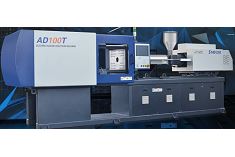
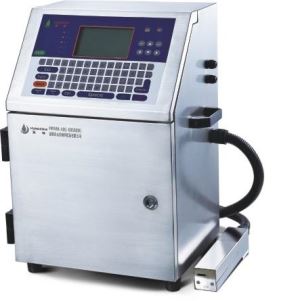

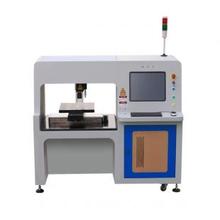





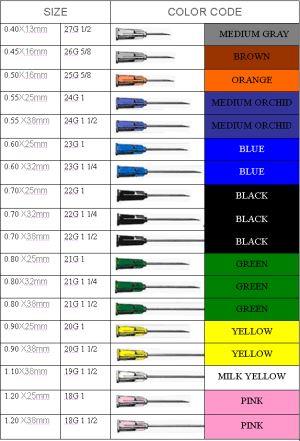

 Favorites
Favorites




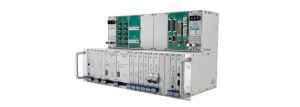
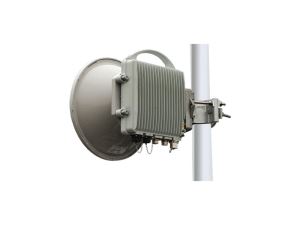
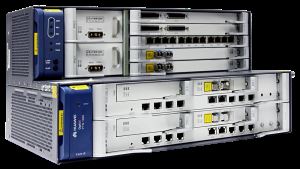
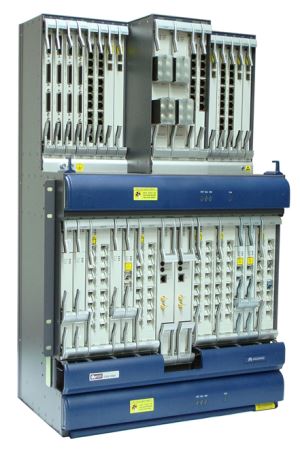


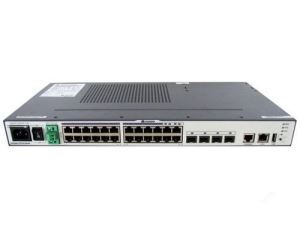
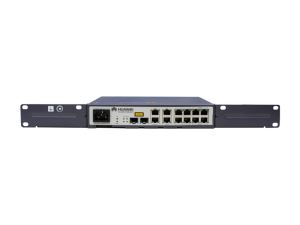
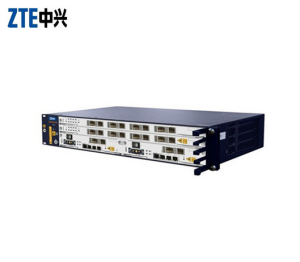

 Frequent updates ensuring high quality data
Frequent updates ensuring high quality data
 Over 5000 customers trust us to help grow their business!
Over 5000 customers trust us to help grow their business!


 Menu
Menu